As warm weather arrives, you might be thinking about upgrading your windows for various reasons - better insulation during colder months, reducing energy bills, keeping the heat out during summer, or even increasing the size of your windows for more natural light and stunning views. With the growing trend of Canadians favouring larger windows, it's essential to carefully consider how your window choices will impact your home's comfort, energy efficiency, and overall expenses.
Although renovations can be costly, many renovations will increase the value of your home, give it greater curb appeal and help you sell more easily in the future, if that’s one of your goals.
The Growing Window-to-Wall Ratio Trend: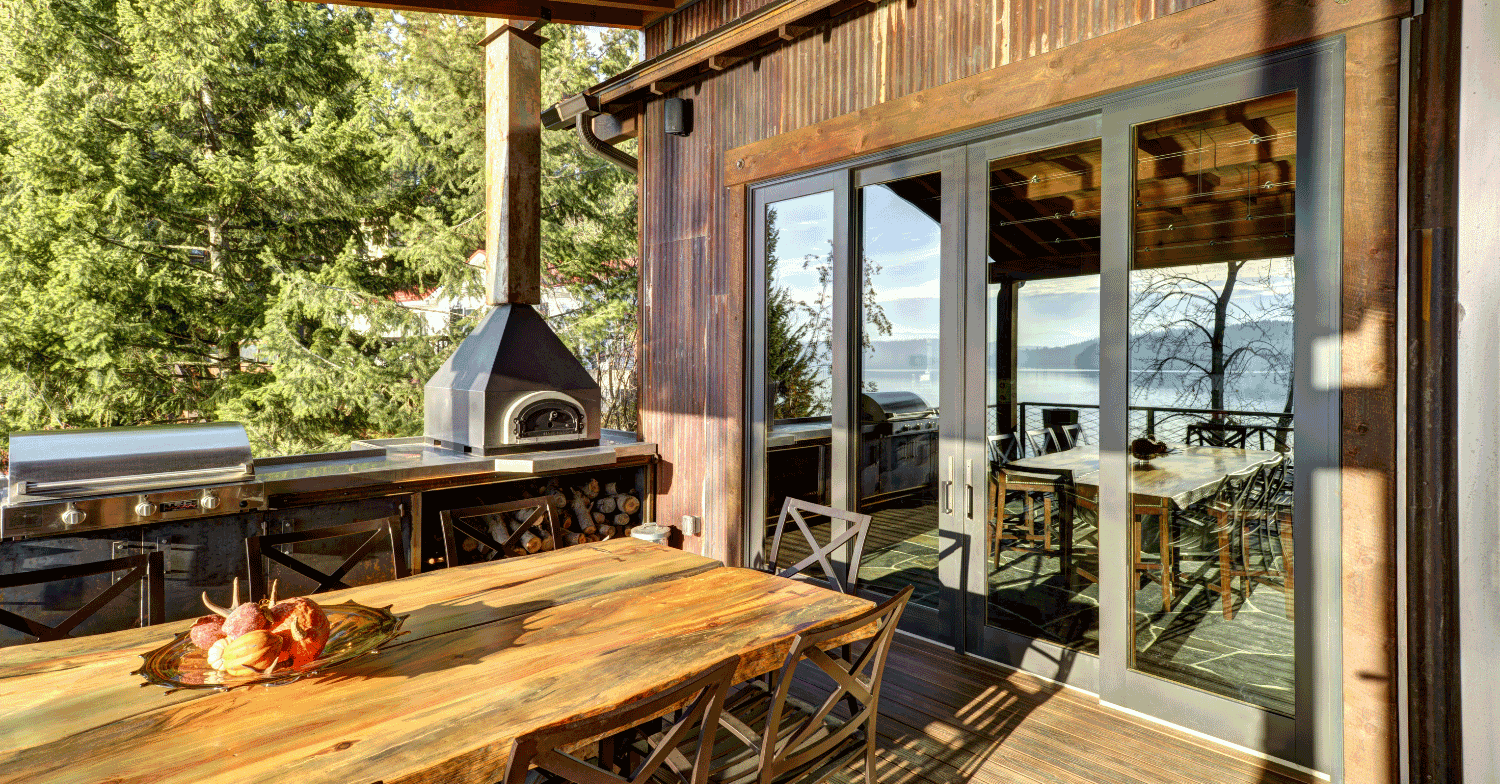 JELD-WEN's Fiberglass Patio doors
JELD-WEN's Fiberglass Patio doors
Between 2000 and 2016, the Canadian window-to-wall ratio (WWR) experienced a substantial increase, jumping from 8-10% to 17-25%. This highlights the importance of selecting high-performance windows that balance generous glass areas with optimal home comfort. A larger glass area requires quality windows to support it. In fact, when exceeding a 20% WWR, relying on a triple-pane window can achieve a higher effective R-Value with an R20 batt wall, compared to R20 batt walls + R10 sheathing with double-glazed windows. Since windows are essential for protecting your family from the elements and maintaining a cozy living space all year round, investing in a high-quality triple-pane window can prove more advantageous than continually adding extra insulation.
Navigating National Building Code Changes: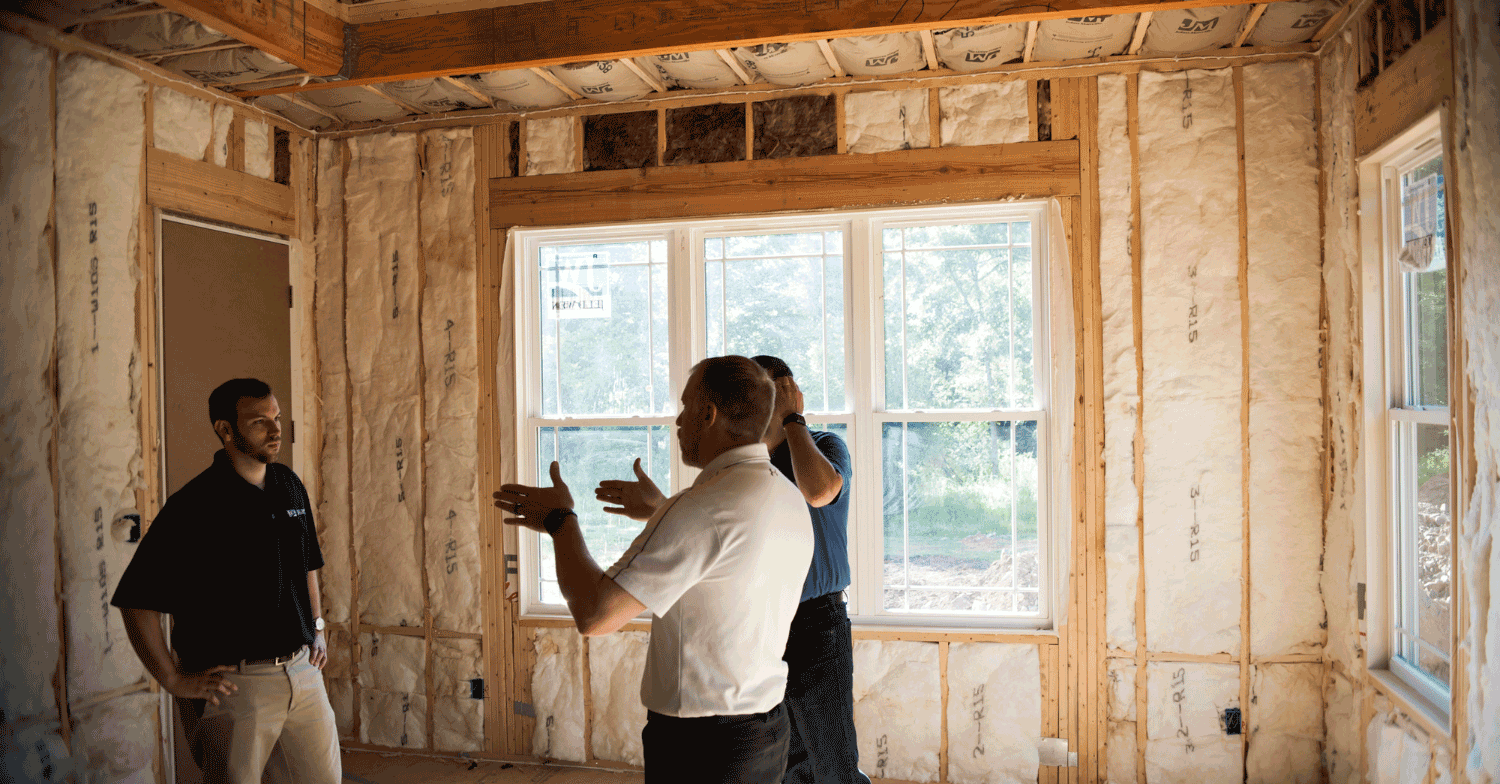
The National Building Code of Canada (NBC) has recently introduced energy performance tiers for both new constructions and renovations. The tiered code aims to reach tier 5 by approximately 2030, while currently, ENERGY STAR® standard homes are being built to meet tier 3 standards. Additionally, by 2025-2027, ENERGY STAR targets a maximum U-Factor of 1.05 or ER 40 by 2030, building codes aim for a max U-Factor of 0.82 or ER 44. The 2020 code focuses on redesigning for 2025 while setting the stage for 2030, highlighting the industry's future direction. Third-party certification and labelling of energy performance are expected to streamline adoption.
These developments align with government rebate programs and other industry organizations. Currently, Canada offers 13 rebate and grant programs for ENERGY STAR windows. These incentives drive demand by rewarding consumers who choose high-performance windows. Programs such as Net-Zero, PassivHaus, Greener Homes, and ENERGY STAR support the advanced performance levels necessary for maintaining certification. However, many existing window designs will not meet these future standards. To qualify for government incentive programs, window manufacturers must achieve higher performance levels.
Windows & Compliance: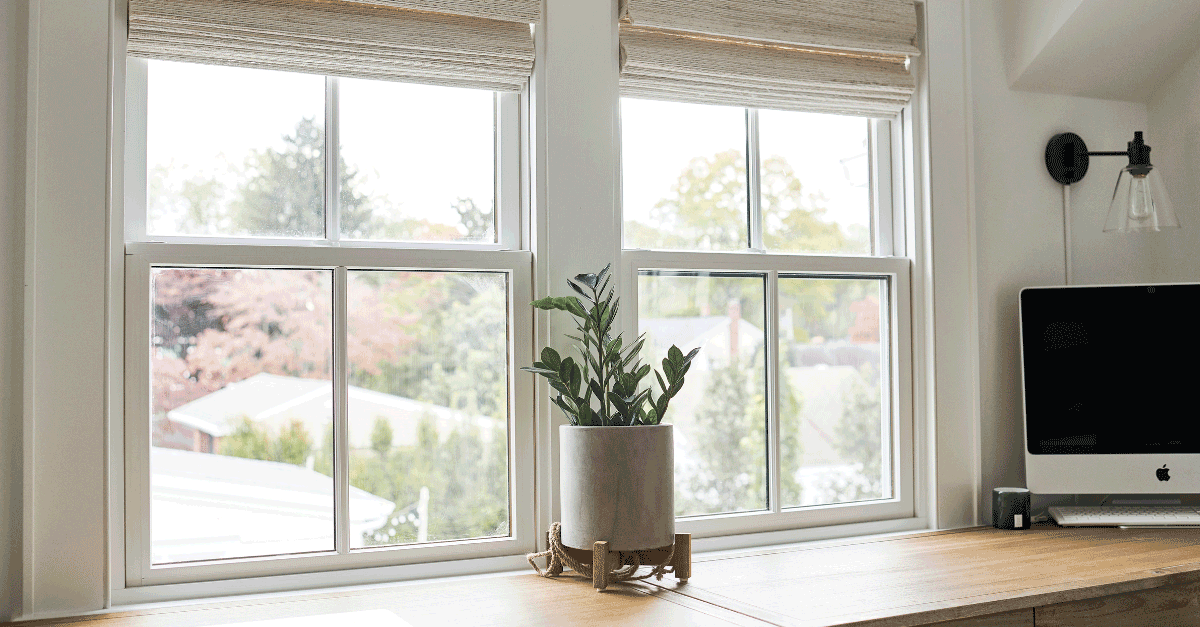 JELD-WEN's Single-Hung Windows
JELD-WEN's Single-Hung Windows
In addition to meeting building code requirements, homeowners and businesses increasingly demand eco-friendly windows that minimize energy consumption, maximize glass area for improved views, and remain affordable. Windows account for a significant portion of the building envelope, making it crucial for manufacturers to keep up with evolving regulatory codes. Windows can be rated using the U-factor (heat loss), solar heat gain coefficient (SHGC), or energy rating (ER), all of which are essential in meeting building code requirements. To comply with these requirements now and in the future, manufacturers may need to re-engineer their products to effectively strike a balance between SHGC, ER, and U-factors.
Thermal Comfort & Windows: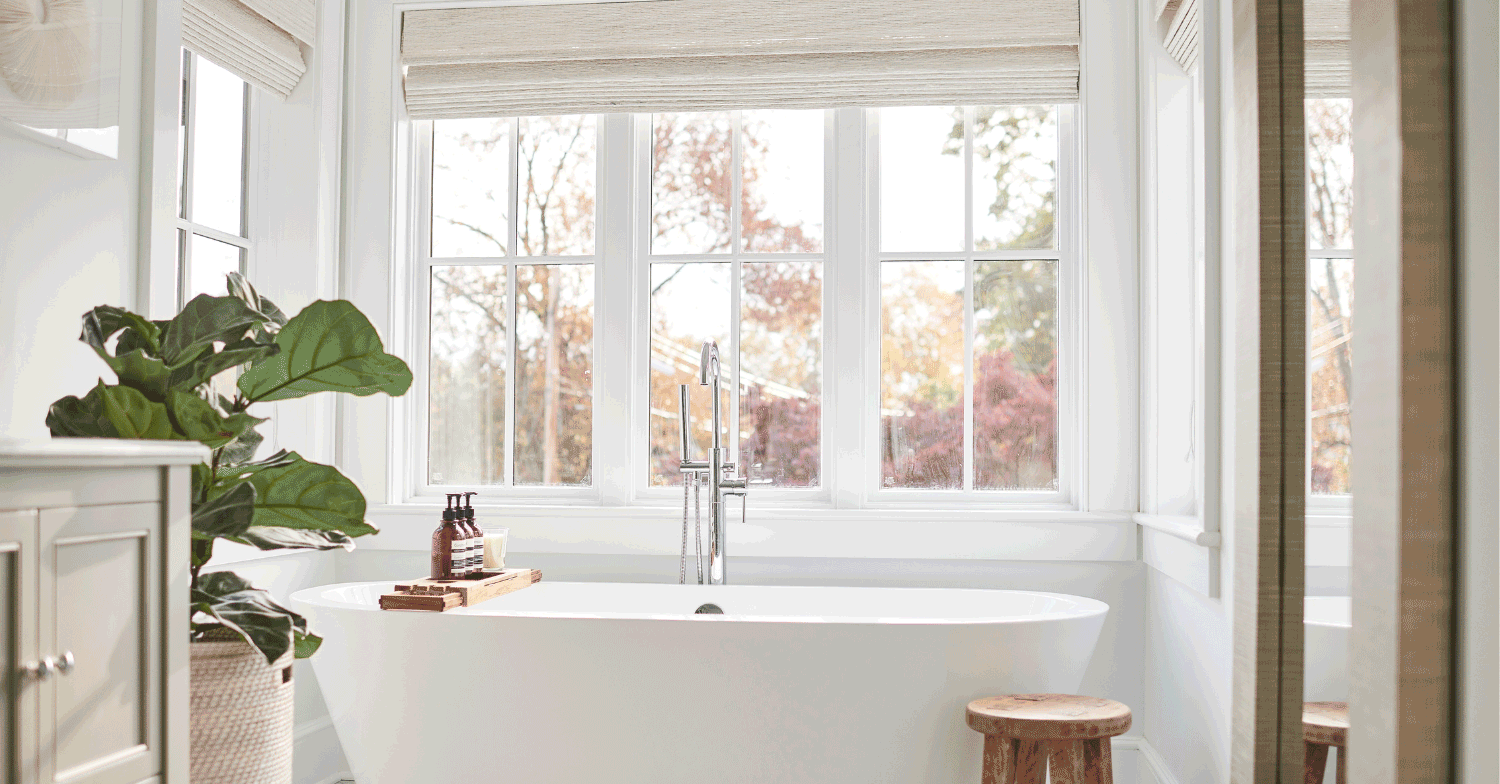 JELD-WEN's Fixed Windows
JELD-WEN's Fixed Windows
Windows significantly impact thermal comfort. High-quality triple-pane windows can maintain comfortable interior temperatures and significantly reduce discomfort compared to double-pane windows, even near the glass. Triple-pane windows truly make a difference. For instance, with double-pane windows, homeowners can experience up to 500+ hours of discomfort during the winter and 75+ hours in the summer. In contrast, discomfort is negligible with triple-pane windows.
To assess your windows' thermal comfort, try the Cardinal Glass calculator:
Window Orientation & Exposure: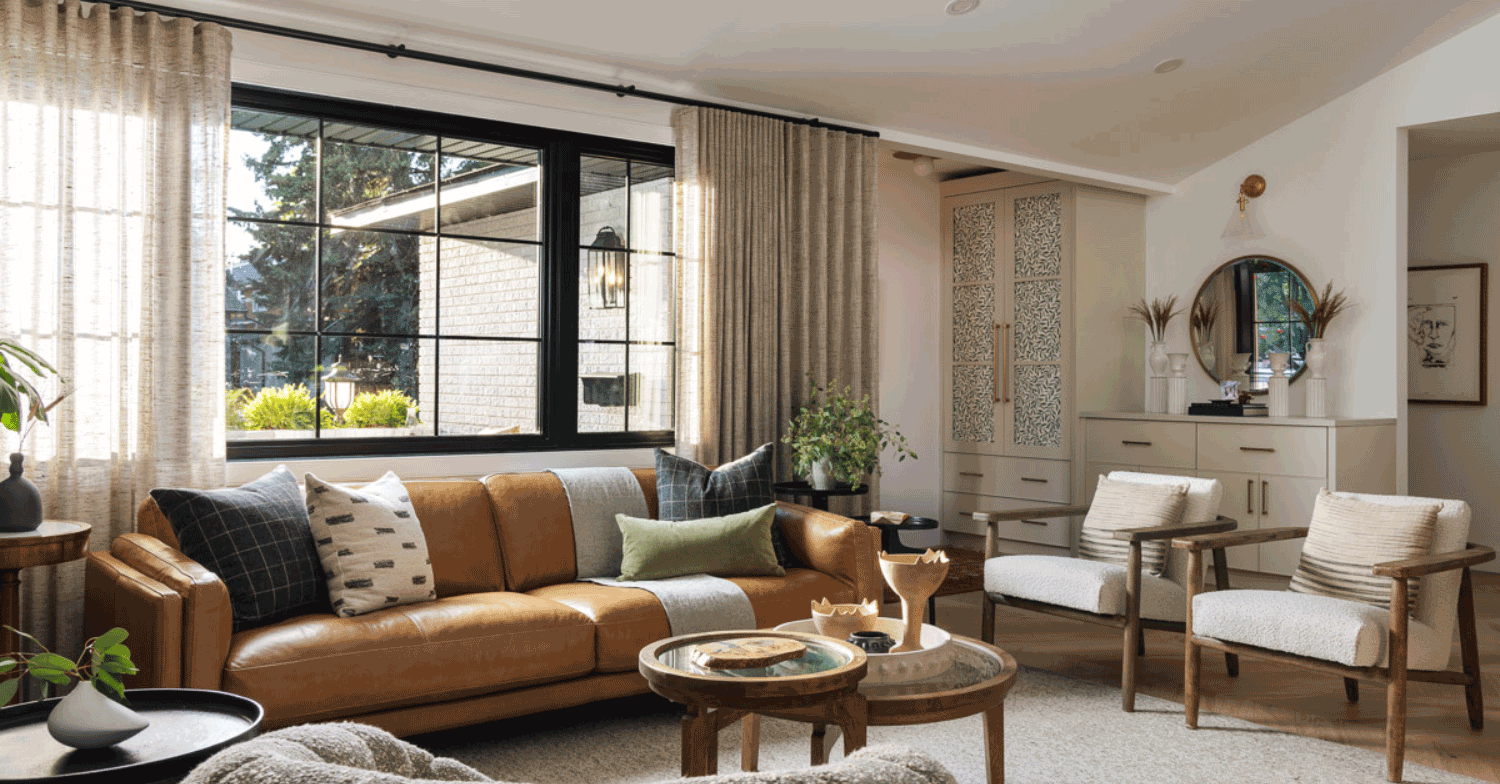 JELD-WEN's Black Fixed Windows
JELD-WEN's Black Fixed Windows
Window orientation and large glass areas play a crucial role in improving a home's comfort. Proper window orientation ensures that windows are placed to maximize solar heat gain during colder months and minimize it during warmer months, optimizing the home's overall energy efficiency. Two key methods - Energy Rating (ER) and U-factor - help you make the best decision based on your local climate and needs.
Energy Rating (ER): Think of ER as the window's ability to make the most of the sun's warmth. It takes into account how well a window captures solar heat, insulates, and prevents air leaks. In sunny areas, a high ER means your window is great at using sunlight to keep your home cozy, saving you money on heating bills. U-Factor: U-factor is all about insulation. A low U-factor means your window is fantastic at preventing heat from escaping in the winter or sneaking in during the summer. This helps maintain a comfortable temperature inside and reduces energy costs for heating and cooling.As a homeowner, understanding ER and U-factor is essential. Choosing the right windows can make your home more energy-efficient, comfortable, and cost-effective. So, whether you're basking in the sun's warmth or keeping the cold at bay, these methods ensure you find the perfect windows for your home.
By considering window orientations and the climate, you can make the best choice for your needs. JELD-WEN’s advanced low emissivity (Low E) window coatings can significantly enhance the energy efficiency, comfort, and sustainability in your home. Our SunFlow™ Low E coating is perfect for sun-drenched homes, as it captures sunlight to warm your interiors. However, it may not be as effective in retaining energy inside. For those who prioritize energy retention and indoor comfort, our SunResist™ Low E coatings are the go-to option, which helps improve the U-factor performance. For a well-rounded solution that works in most climates and exposures, our SunStable™ coating is ideal. It balances solar heat gains with efficient energy retention, ensuring a comfortable and eco-friendly living space.
By understanding and selecting the right Low E coating, homeowners can enjoy the benefits of an improved energy rating (ER) and a greener, more comfortable home.
Environmental & Financial Benefits: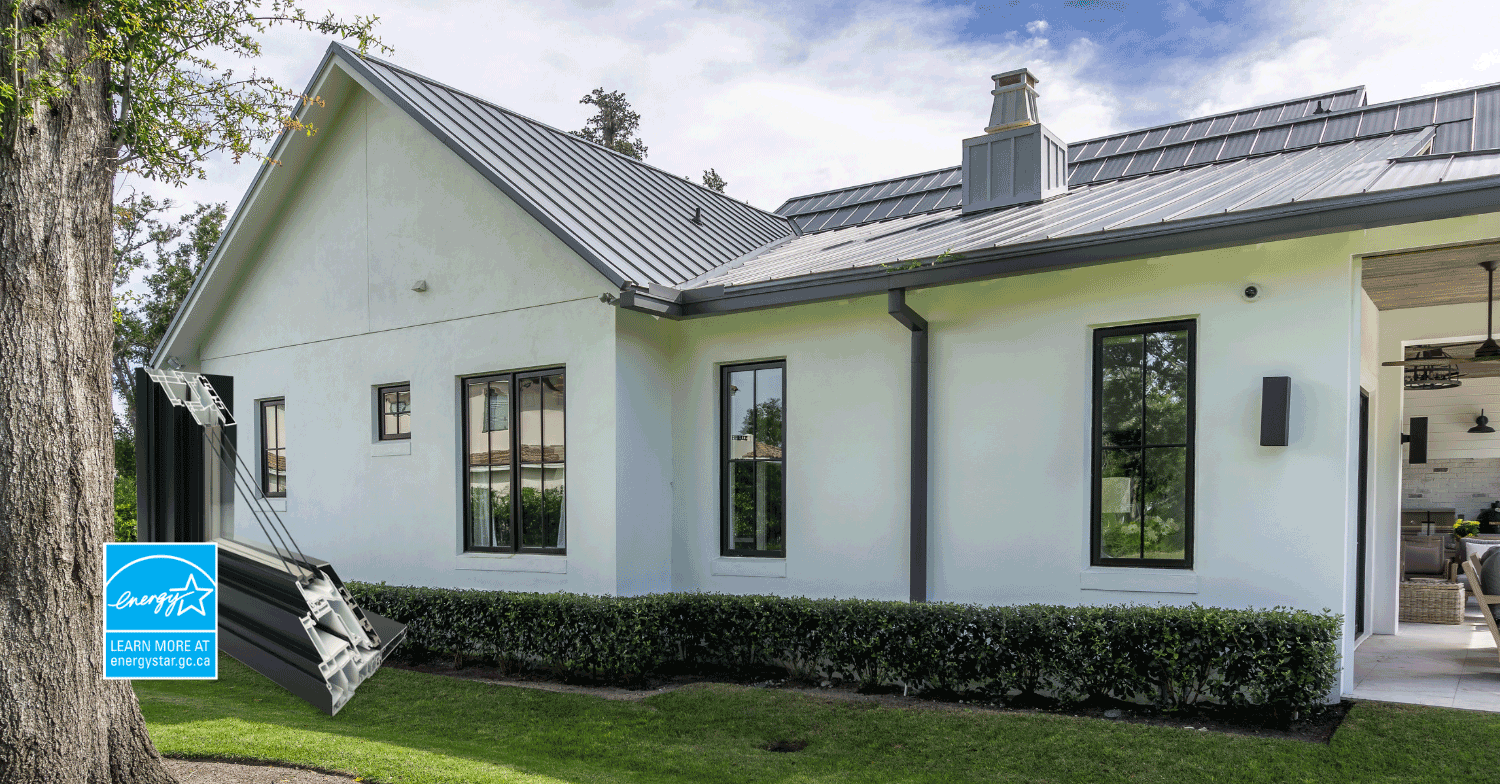 JELD-WEN's Noir Collection
JELD-WEN's Noir Collection
By choosing the right Low E coatings, window-to-wall ratio (WWR), triple-pane windows, and proper orientation, you can significantly improve your home's energy efficiency. This approach can potentially reduce cooling loads by 40-60%, translating to savings of around $850–$1,000 on AC condenser units. As a result, you can invest in a smaller, more eco-friendly AC unit.
Furthermore, triple-pane windows with 2 Low E coatings can reduce CO2 emissions by 0.27 tonnes per year compared to dual-pane windows with just 1 Low E coating. Over 30 years, this amounts to a carbon footprint reduction of 8.1 tonnes of CO2E. By optimizing your windows, you can enjoy both financial savings and contribute to a greener future.
To discover how much you could save with the new windows, JELD-WEN’s energy savings and purchase rebate calculator:
Cladding & Performance:
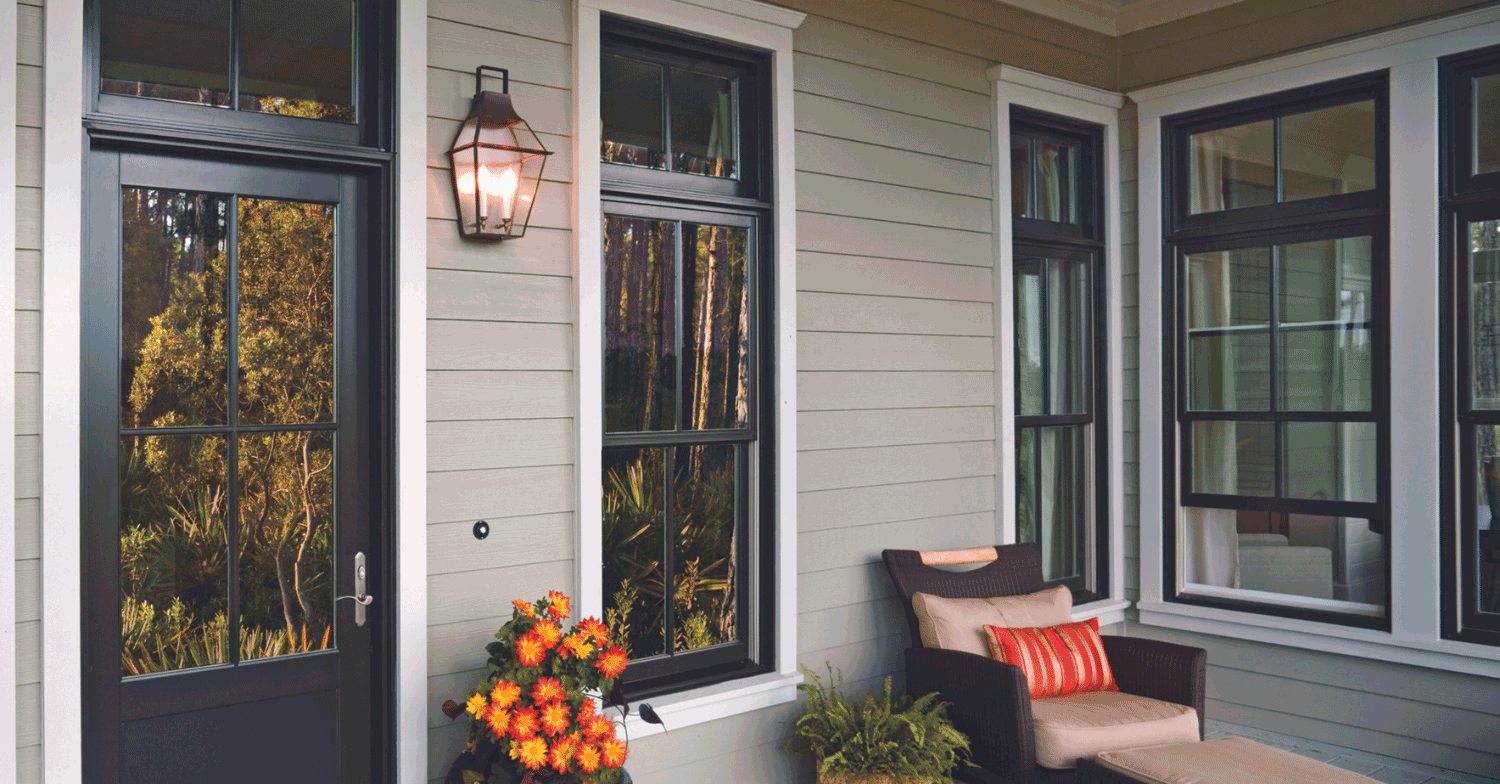 JELD-WEN's Black windows and Entry door
JELD-WEN's Black windows and Entry door
Well-designed cladding, particularly aluminum, should not negatively impact your windows' energy efficiency or performance. In some cases, exterior cladding can enhance structural performance, while both exterior and interior cladding can contribute to better acoustics performance.
Take a deep dive into building code changes with this webinar
Dive into the world of building code changes and uncover new opportunities for windows by joining the engaging webinar. Lisa Bergeron from JELD-WEN of Canada and Andrew Oding from Building Knowledge Canada will share their expertise and insights. Don't miss this chance to learn from industry professionals and enhance your understanding of energy-efficient windows. Unlock the potential for a more sustainable future!
Explore Related Posts












